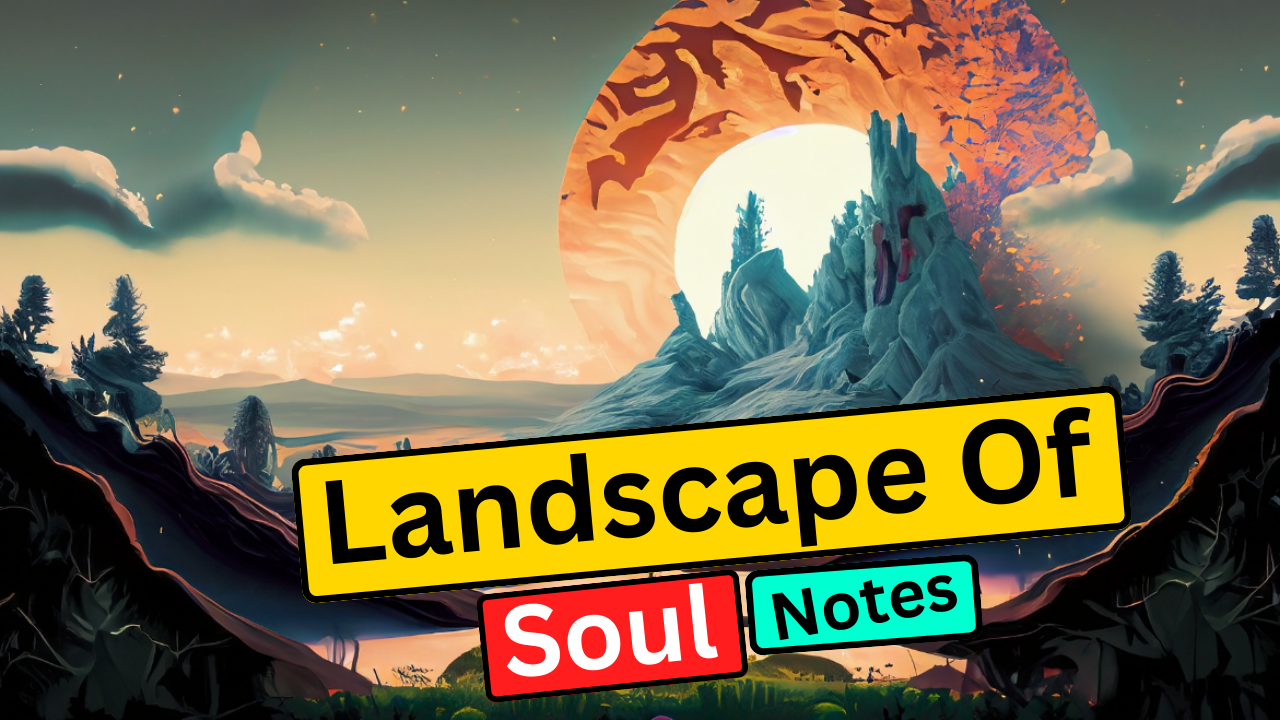Landscape to Soul Summary Class 11 English

Etutor Guru
22 Aug 2023
Summary of Landscape to Soul
This chapter has two parts, and the author is Nathalie Trouveroy. The first part comes from “Landscape of the Soul: Ethics and Spirituality in Chinese Painting,” while the second comes from “Getting Inside “Outsider Art.” An article called “Getting Inside” came out in the Hindustan Times in 2005. She is the one who wrote it. The arts are the main topic of the chapter. It is about the art of painting and is told through different stories. We learn about Chinese painters and their works, as well as the stories behind them. In the same way, the second part looks at the idea of “art brut,” which means “art of those who have no right.” So, we learn a lot about the history of art and art itself.
The ideas in this chapter teach you how important imagination is and how different painters see the world. You don’t have to look at art through a single lens; there are many ways to picture a single painting. The author tries to show how different types of art from different parts of the world in ancient times can be compared. The author compares Chinese and European art by telling two stories about Chinese art and one story about European art. Europeans want exact copies, but in Asia, art is what gives life and energy. In order to understand Chinese art, the viewer must take part, both physically and mentally. The lesson also helps people understand how real the paintings were and how well they were made.
Landscape to Soul Summary in English
This chapter is split into two parts. Each part tells a story about art and its history. Two stories from the book “Landscape of the Soul: Ethics and Spirituality in Chinese Painting” are used to teach us about painting. The first one is about Wu Daozi, a well-known painter from China. About 800 years ago, the Tang Emperor Xuanzong hired him to decorate a wall in the palace.
Wu painted beautiful landscapes with mountains, waterfalls, forests, clouds, blue skies, and happy people living together in harmony. He did, however, paint a spirit living in a cave at the foot of a mountain. The work of the master was hidden behind a screen, so only the Emperor could see it. When the painter showed the emperor his work, he made the emperor look at a cave at the bottom of a mountain in the picture and think that it was a real spirit. The cave door opened when the painter clapped his hands. The painter went into the cave, but the door shut behind him. Before the Emperor could move or say anything, the picture on the wall was gone. Wu Daozi’s brush was nowhere to be found, and the painter was never seen again in this world.
So, after vanishing, the author says that this shows that he or she knows about the mysterious inner world. So, it means that only masters know the way within and can go beyond any physical form. In the same way, the second story is about a painter who believed in the spiritual magic and hidden meanings of art. His belief in his art was so strong and powerful that he was afraid to bring it to life and get caught by a dragon that threw fire.
The third one is about Quinten Metsys, a Master Blacksmith, who falls in love with the daughter of a painter. Even though the father didn’t like that his son-in-law worked in that field, he did it anyway. So Quinten sneaked into the painter’s studio and painted a fly on his most recent canvas so realistically that the master tried to swat it away before he realised what had happened. It was so realistic that it was almost like a real one. These two stories show what each style of art tries to achieve: in Europe, a perfect illusion of likeness, and in Asia, the essence of life and spirit.
The author also talks about Shanshui, which means “mountain water” in Chinese. Daoism says that this universe is made up of two poles that go together: Yin (feminine) and Yang (masculine) (masculine). These two energies work together to make the universe. “Shanshui” is the Daoist word for a landscape. However, it doesn’t show a real landscape. Instead, it shows how Daoists see the world.
In the last part of “Getting Inside “Outsider Art” by Brinda Suri, “art brut” is explained. Art Brut means the art of people who don’t “deserve” to be artists. It’s because they didn’t go to art school, but they have artistic talent and insight. She calls them the ones who don’t follow the rules and think outside the box. People say that their art is “out of the ordinary.” The French painter Jean Dubuffet questioned the idea of “art brut” in the 1940s. Before that, the art of a person with no training was not as important. “An untrained genius was building paradise around the same time.” She uses Nek Chand’s work at Chandigarh’s Rock Garden as an example of art brut.
Conclusion of Landscape to Soul
To sum up, we learn from the Landscape to Soul summary that art is an endless form with a long history that can’t be put into a box or label because it has a life of its own.

